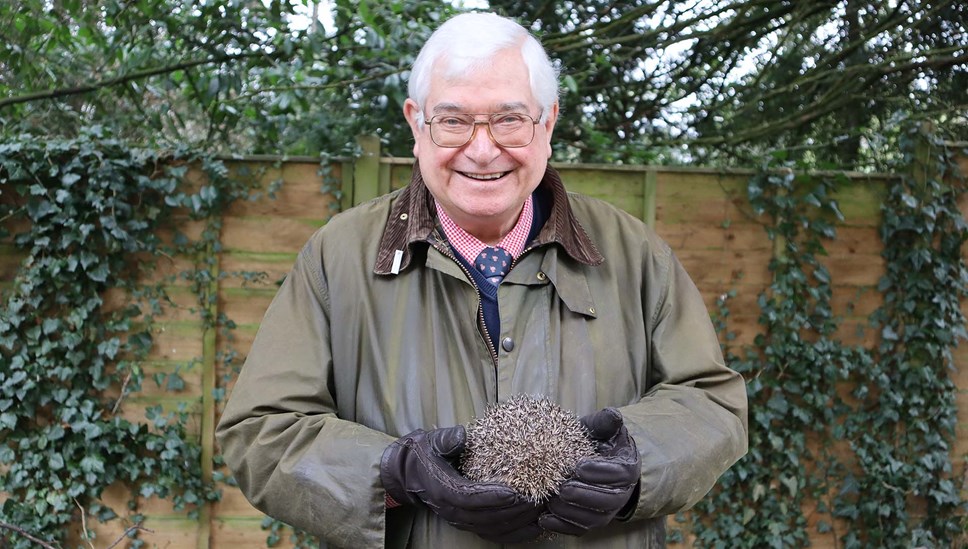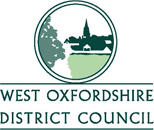
West Oxfordshire hedgehogs to get safer routes as part of new ‘urban highway’ campaign to boost population
Hedgehogs living in the most built up areas of West Oxfordshire are to get a helping hand thanks to a new initiative, which launches this week, as the District Council pushes to protect and restore natural ecosystems as part of its response to tackling the ecological emergency.
The ‘Hedgehog Highway’ campaign invites residents, particularly those living in urban areas, to create gaps in otherwise impassable garden fences and walls, to give hedgehogs - as well as other wildlife - greater freedom to roam, forage and breed in an effort to boost declining numbers.
Two years ago, hedgehogs joined the internationally recognised Red List for British Mammals, officially classifying them as vulnerable to extinction.
Councillor David Harvey, Cabinet Member for Climate Change at West Oxfordshire District Council said: “We are delighted to be launching this initiative just at the time when our native hedgehogs will be coming out of hibernation and busy looking for food. Like all creatures, hedgehogs are part of the ecosystem and have a crucial part to play but over the past two decades, their numbers have dwindled significantly. Injury or death from increased road traffic and activities such as strimming may be partly to blame, but lack of food and loss of natural habitat, as well as access to it, are also contributing to this decline.
“Hedgehogs can travel up to two kilometres in a night but our modern ways of living have resulted in habitats becoming increasingly fragmented by a network of roads and fences, which has had a huge impact. We hope this campaign will go some way in restoring the balance.”
The initiative will target the district’s most urban areas in Carterton, Chipping Norton and Witney. Residents living in the three towns are invited to take a photo of their newly created hedgehog hole and send it to [email protected] and in return will receive a small plaque to pin above the hole to alert others to their whereabouts and purpose so that access can be maintained. However, anyone outside of these areas but interested in furthering the welfare of native hedgehogs can also take part by creating a small gap in their garden fence.
The District Council has marked the launch of the project by creating its own hedgehog access point at the council offices at Woodgreen, Witney.
To create a hedgehog ‘highway’ into an adjoining garden or green space, simply cut a hole in a boundary fence approximately 13cm high x 13cm wide or remove a brick if the wall is solid or alternatively dig a shallow channel beneath the fence line, checking with neighbours first. Creating holes near to vegetation where hedgehogs can feel safest is best.
At the end of the project, the hedgehog holes will be mapped to give a snapshot of the newly created wildlife corridors.
To find out more about the campaign visit: https://www.westoxon.gov.uk/hedgehoghighway
Contact Information
West Oxfordshire District Council Communications Team
Notes to editors
Photo shows:
Councillor David Harvey, Cabinet Member for Climate Change at West Oxfordshire District Council and Jackie, a rescued hedgehog.
Notes to Editor:
- West Oxfordshire District Council’s ‘Climate Change Strategy for West Oxfordshire 2021-25’ addresses five themes for local climate action including ‘protecting and restoring natural ecosystems.’ The strategy can be found at: https://www.westoxon.gov.uk/environment/climate-action/climate-change-strategy/
- According to the Wildlife Trust’s latest State of Britain report, hedgehog numbers in urban areas have fallen by up to 30% and 50% in rural areas in the past 20 years.
- Hedgehogs are actually valuable pest controllers eating snails, slugs and insects, protecting plants from disease and pest infections.
- Hedgehogs are an indicators species. Populations act like a barometer for the health of the local environment. When hedgehog populations thrive, it suggests a plentiful supply of invertebrates, good diversity of habitat and connectivity of the natural environment. These things are important to a whole range of wildlife, not just hedgehogs.
